




Air hockey on the table is an exciting and fun sport

Introducing the game Hand Speed or Handix

The prominent role of video game consoles in the evolution of amusement parks

Augmented reality in the city of modern games

Park and outdoor products - beauty, safety and entertainment in the field of playground equipment

New playground equipment, a look at the latest technologies in 2024

Kindergarten teacher training complete guide

Kindergarten equipment is a complete guide to providing a safe and educational environment for children

Installment purchase of playhouse and kindergarten equipment, advantages and disadvantages

Kindergarten supplies exchange in Tehran

Kindergarten equipment and supplies
Segway ninebot s max electric scooter review
no equivalent
Review - In a world where electric scooters are on almost every street corner, it takes something special to stand out. Ninebot is a scooter brand that has been around for a while and they make many of the kick scooter style electric scooters you see for rent in urban areas. Segway has been around a lot longer, making waves in 2002 with its first "personal transportation" that most of us remember. Over the past few years, Segway and Ninebot have merged and their offspring have come up with a line of Segway-style scooters to complement Ninebot's traditional scooter line. The Segway Ninebot S MAX is presented as an upgraded version of the Segway Ninebot S and has many changes compared to the non-max version. I've taken it for a spin (groan, sorry) and have some thoughts - mostly good.
How is it and how does it work?
Segway Ninebot S MAX is a self-balancing electric personal transport scooter. This car has a considerable range and instead of the knee steering wheel that they have done in their previous models, a steering wheel based on the handle has been added. The scooter is controlled by a steering system where a touch of light horizontally turns the scooter, while pushing it forward/backward or bending your body accelerates and decelerates.
What is in the box of this scooter?
Segway Ninebot S Max
Charger and AC Wall Plug
User Manual
Hardware Specifications
Unstretched Dimensions (L x W x H): 16.6 x 22.8 x 37.5 inches (42.1 cm x 57.8 cm x 95.2 cm)
Net Weight (without charger): 50.3 lbs (22.8 kg)
Recommended rider weight: 88-187 lbs (40-85 kg)
Top speed: 12.4 mpg (20 km/h)
Typical range: ~23.6 miles (38 km)
Max incline: ~15�
Traversable terrain : Pavement, Compacted Soil, Slope < 15�, Obstacles < 0.4" (1 cm), Gap < 1.2" (3 cm)
Operating Temperature: 104-14�F (-10-40�C)
Storage Temperature : -4-122�F (-20-50�C)
Climate Rating: IP54
Charge Time: 4 Hours
Battery: 432Wh, 55.5V, Over/Under Voltage Protection, Overheating Protection, Sleep Automatic
Motors: 500 W x 2 (2400 W peak x 2)
Charger: 100-240 VAC, 120 W, 2 A Tires
: 2.7 (68 mm) wide; Hollow tire with a diameter of 10
, design and features
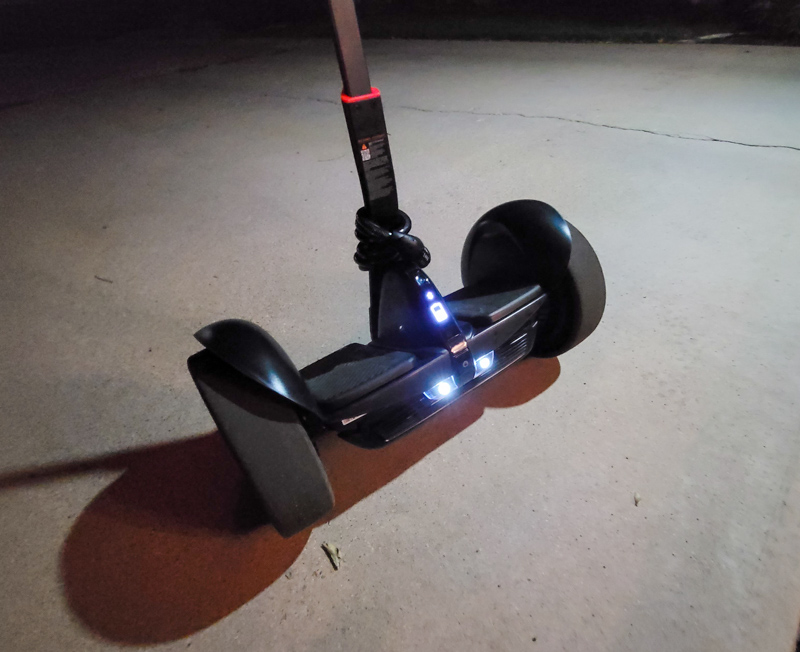
The Segway Ninebot S MAX looks like a hoverboard with a handle attached. Riding early hoverboards, the similarity stops there (I couldn't balance myself on a cheap hoverboard to save my life, but I picked this one up with very little learning curve). The dual peak 500W/2400W motors do a great job of auto-balancing while the ride is standing still, so the hardest thing to learn was getting over minor bumps, like transitioning the car onto the road or on- and off-ramps. from the sidewalk Much of the learning curve here feels like it was a mind game as well, your brain and body expect it to jump forward when it hits a small obstacle, but the scooter itself easily stays in position during such a transition.
There are several lights and indicators on the scooter, including a digital speedometer, dual front "LED headlamps" and a battery status indicator on the front. The handlebar is easily adjustable to accommodate almost any rider - I'm 6'4" and it feels great at max height, but even if I were taller and therefore the handlebars were a bit lower, it would still work great. they did
The exterior is almost entirely plastic, but the interior of the handlebars is metal, and you can tell that the base of the scooter is quite solidly built. Wheels are a solid rubber/plastic style common in the electric scooter market. With solid wheels like these, you lose some of the shock absorption you get with air-filled tires, but the trade-off is that wheels will never go flat, taking a lot of damage to keep them from rolling.
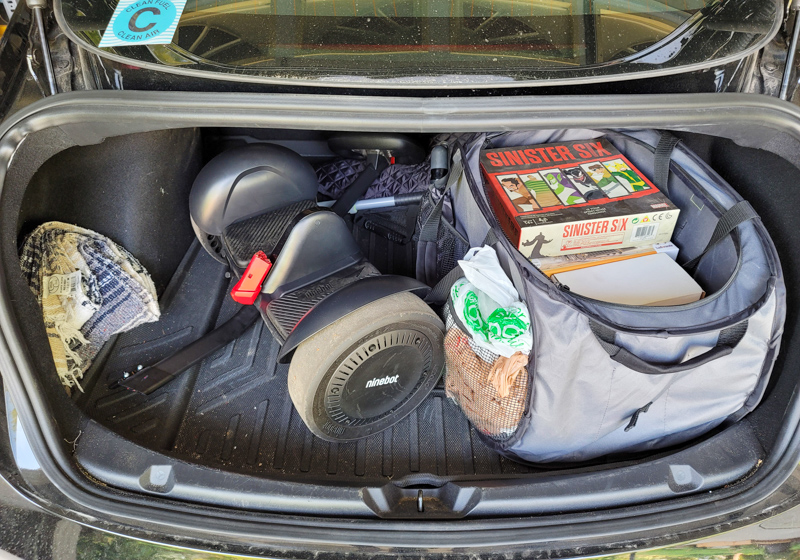
The handles also detach easily for transport, making it a great option for a leisurely ride to various destinations or a 'last mile' transport option where you park outside a busy area and scooter for the rest.
Installation
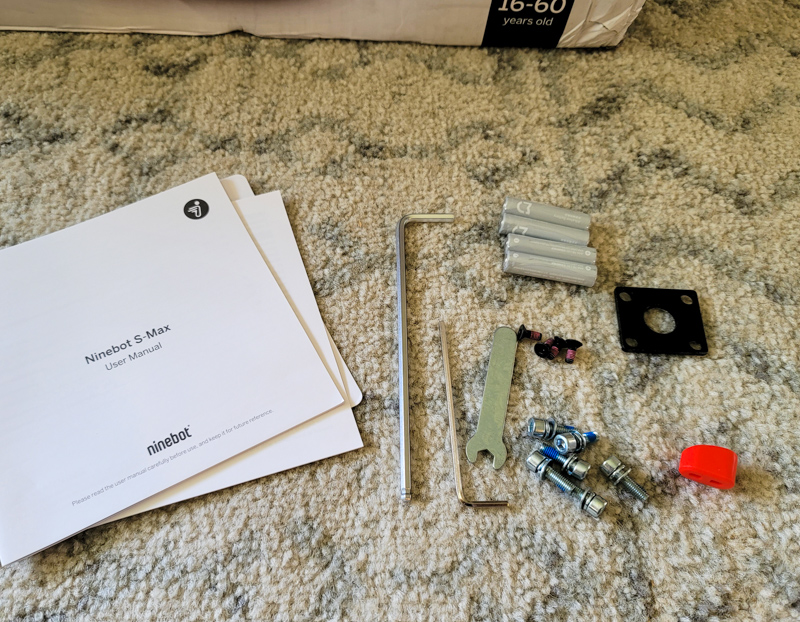
Installation includes a few screws and a battery. The user manual was easy to understand and the included tools did the job well.
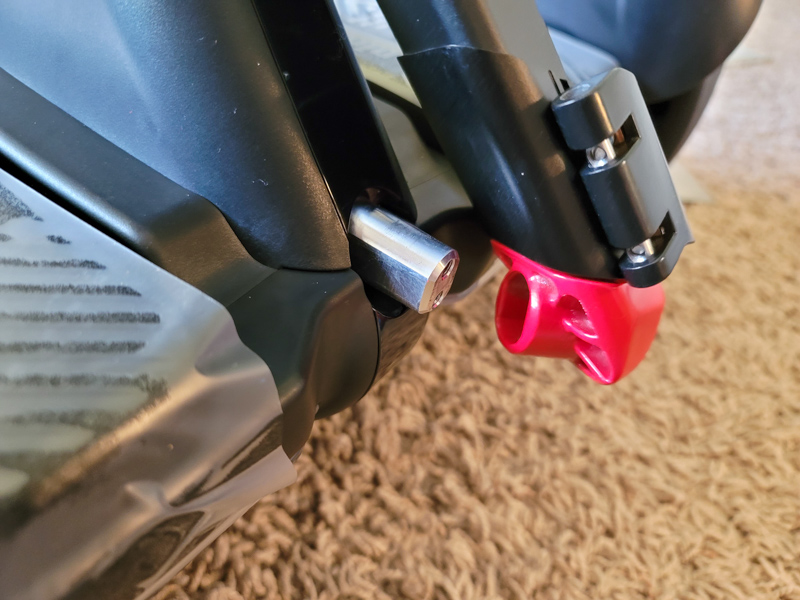
The handlebar stem is attached to the base of the scooter with 2 screws, but you can quickly unscrew them afterwards. The system worked well, and always felt very solid.
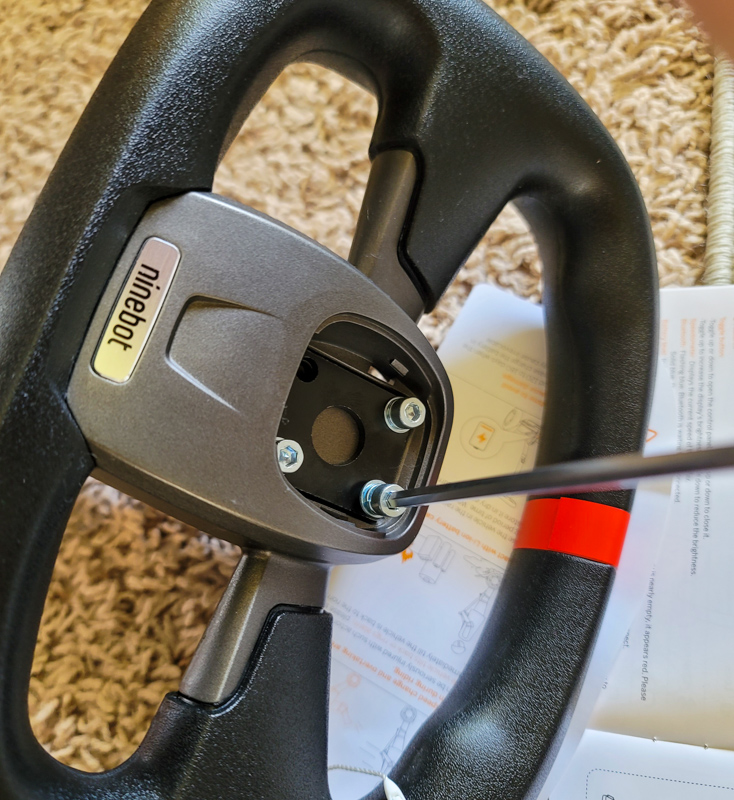
The handle is made of plastic/rubber and feels good to hold. It attaches to the steering stem with a few screws as shown here.
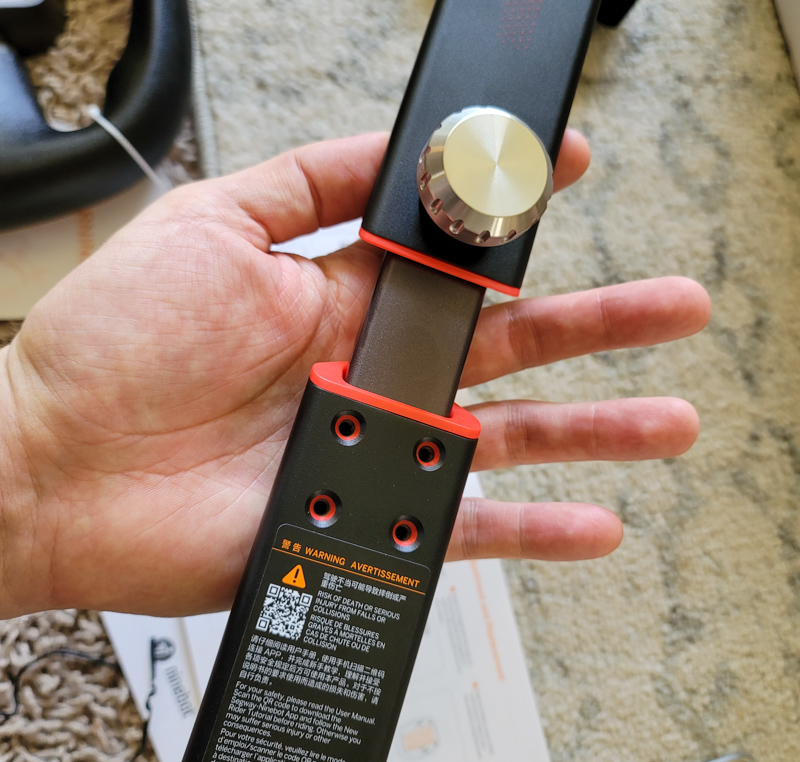
The steering wheel itself comes in two pieces, with a strong metal inner body bolted together. A metal knob allows for quick adjustment of the steering wheel in the future.
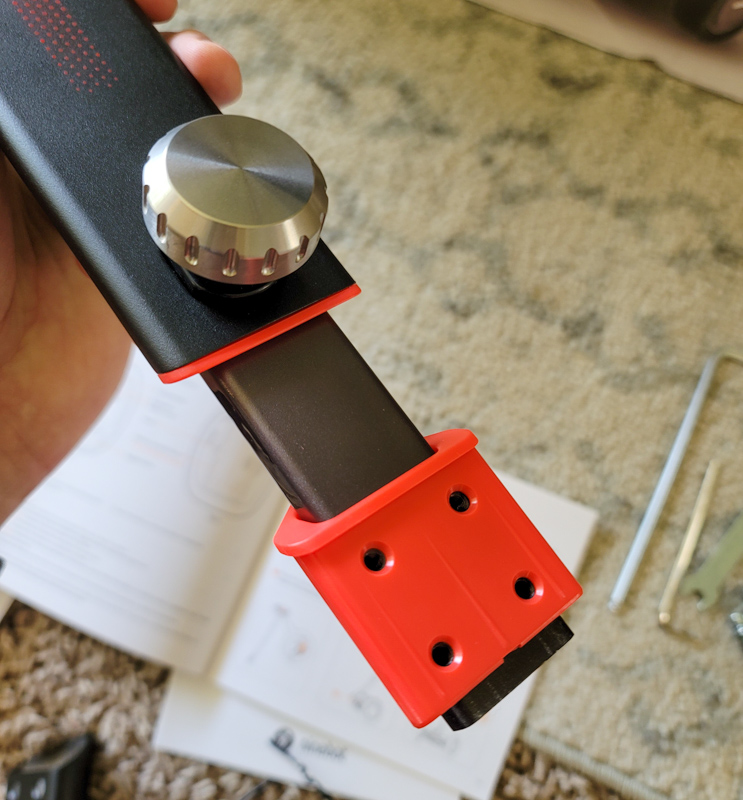
Here is the bottom of the steering stem, a few more screws go in here. The next steps are to configure the mobile app (required to unlock normal and sport modes and light customization. Available for iOS and Android).
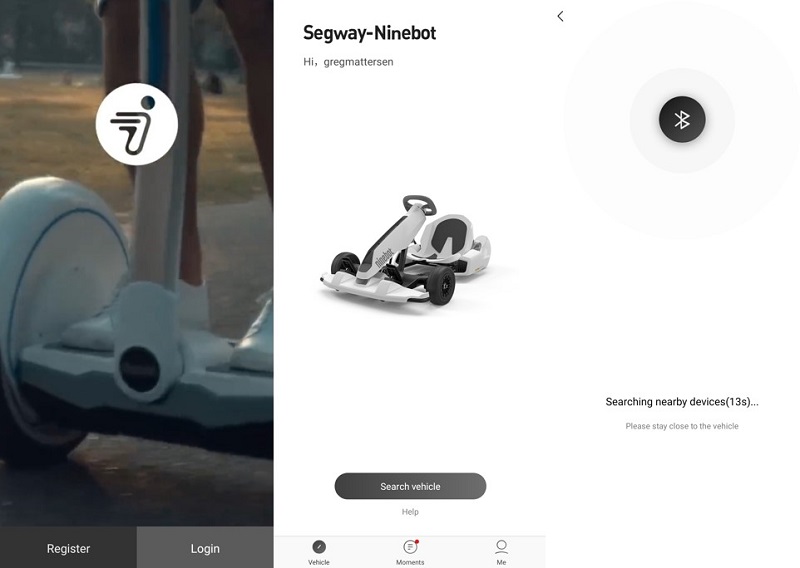
After registering and logging in, you search for the vehicle and the app is paired with the scooter.
Next you'll be taken to a quirky social networking page called "Moments", which is for Ninebot Segway owners to share pictures and messages. It surprised me, but maybe some people are into that sort of thing. You will be required to undergo a new rider training, after which you will be able to ride at limited speed for a while. Once you ride 1km, you can remove all speed limits and go to top speed (12.4mph).
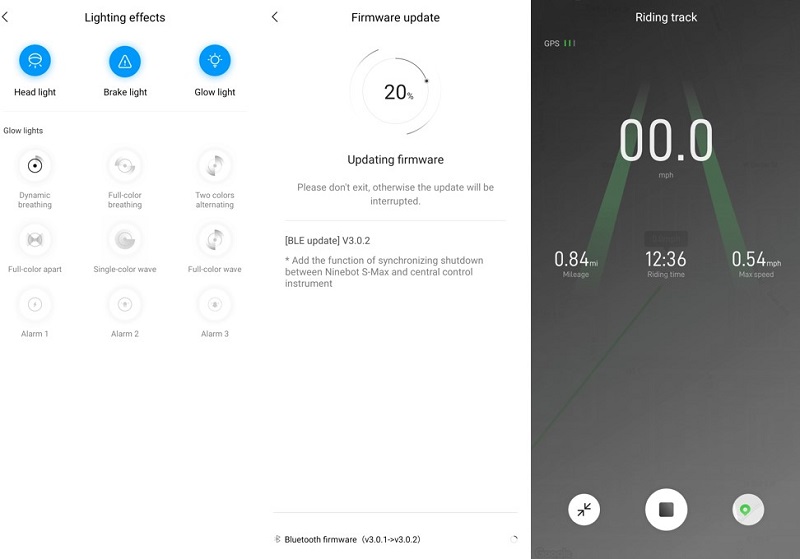
You can also customize the lighting (headlights and RGB lights that shine from under the scooter's deck). The under-deck lighting was a fun touch, but you can't really see it, it's entirely for everyone else's benefit.
At some point you also need to charge the Segway Ninebot S MAX scooter, the charging port is located on the front of the scooter, well protected under a plastic cover and a rubber plug. The whole scooter is IP54 rated, so it's a bit water and dust resistant (although if things get silly, you'd better protect it). Speaking of the front of the scooter, I found it a strange place to display the battery status and have a power button. I think they can't put these features in where you can remove the handlebars, but you have to lean forward a bit to see the battery status while riding. Fortunately, the long range means you won't have to worry about it too much, unless you forget to charge it or travel too far.
efficiency
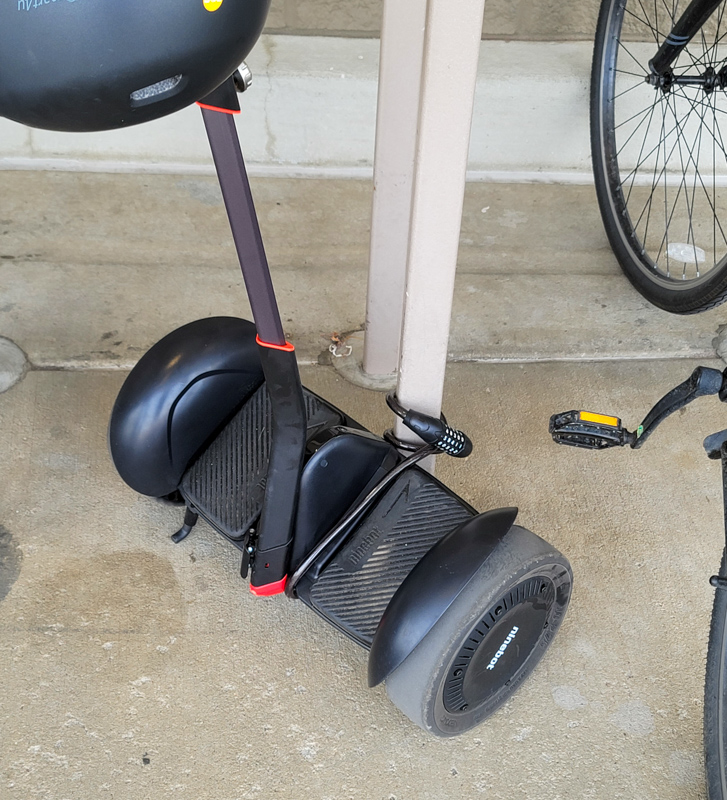
With a Target store a mile and a half from my house, I had a definite first destination. I've traveled to this particular destination before on rental scooters found around my neighborhood, but those previous rides were very bumpy and uncomfortable. The Segway Ninebot S MAX was definitely a step up from the traditional scooter experience: the larger wheels definitely absorbed pavement cracks and uneven bumps much better than a scooter with smaller wheels. It was also much easier to stand in a natural position throughout the ride rather than standing sideways with one foot in front of the other.
When I got to Target, locking the scooter wasn't as easy as a bike, there's no obvious place for the cable or locking bar to go through. I followed Segway's advice in the manual and simply wrapped the lock around the base of the scooter and then around the bike rack. It didn't feel nearly as secure as rolling around in a bike frame, but at least a thief would need a lot of wrangling to get the scooter out. Also note the kickstand in the previous photo: this small kickstand allows the scooter to rest upright.
This makes your standing position much wider than a scooter, and some cities/states have different rules about whether scooters can be ridden on sidewalks or in bike lanes or on the side of the road, so be sure to check before you ride. in your area. If you're riding on the sidewalk, you'll likely ride the entire sidewalk, making collisions with other scooters, bikes, or pedestrians a bit obvious.
The speed, even at maximum settings, is a bit slower than I prefer. It's still a lot faster than walking, but it's 12 mph slower than most rental scooters, making long trips more time-consuming. In addition, the "speed limit" is applied in a strange way by the scooter: if it goes too fast, it leans back. Because you push the handlebars forward to go faster, this causes you to lean your whole body backwards when you go over the speed limit, and the first few times I felt the scooter roll backwards until to fall off the ground After a few days of riding, I got used to the gentle lean back before pushing it too hard and slowing down on my own, but that's one area I'd like to improve on. Better warnings before the strong backward bending phase would be much appreciated.

I like that the scooter has headlights, but they are positioned too low to be very useful in addition to broadcasting your presence. As you can see in the photo above, they really only show you a very narrow strip of road about 10 feet ahead of you. If you are traveling at full speed, this is not enough warning for obstacles. Because of this I hit a fairly large tree branch that was in the road after the storm, which was the only time I fell off the scooter (but it was more of a jogging walk than a fall due to the slower speed). If Ninebot could put the headlights on the handlebars (or even higher than the scooter body), it would help both the rider's lighting and the rider's visibility to cars and other people.
I pushed it to its limits because longer rides weren't comfortable (advertised at 23.6 miles, but that was probably on a flat course with a very light rider). I really liked the short rides, but over time the rough cracks on the pavement or pavement add up, along with the solid wheels and old knees. I was able to get it through at least 5 1-2 mile rides without the battery dropping below 50%, so real world range is probably at least 10-15 miles for riding on the heavier side. The scooter does well on hills up to the recommended 15 degrees, but if you're in a hilly area, you'll take a big hit.
Despite some glitches, I hopped on the Segway Ninebot S MAX almost every night just to cruise around the neighborhood. It was quite fun for short trips, here are some of the bad things I managed to photograph with my drone (controlling the scooter with one hand and the drone with the other):
What I like
Balance and relatively easy to learn
Long range
Portability
Go-Kart option
What I would change
Headlights Better
shock absorption
Higher top speed
Final Thoughts
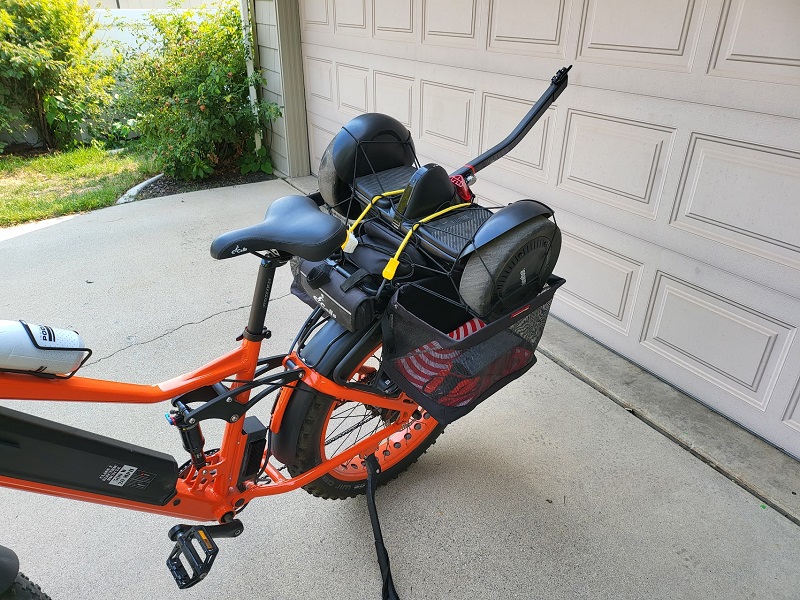
I could see the Segway Ninebot S MAX being a fun toy for some and a useful commuting option for others. I just don't want to carry it on mass transit, there are folding scooter options that are better for buses and trains. Just before writing this review, I had to ditch my bike (main mode of transportation) to tune in. My wife used our only car, but the 2 mile round trip without a bike was an easy 10 minute scooter ride instead of a 20-30 minute walk in the August sun. I didn't even mention card accessories! I've seen prices range from $800 to $1,000, you simply drop the scooter into a go-kart style body kit, which then turns into a go-kart capable of blistering acceleration and a top speed of 22.9 mph. be All in all, if you're looking for a longer-range scooter that's easy to handle and fun to ride, you may have found your perfect option. I know this will go on for a long time. One last thought before I leave you - if you're using it for shopping, be sure to bring a backpack: traveling a few miles with bags full of groceries can make for some hairy moments on the way back. .
Author and translator Ali Asghar Alizadeh
Website source: the-gadgeteer




 Category
Category

